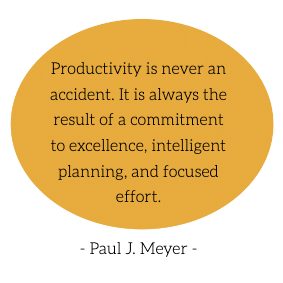WELL DRAFTED AND ADMINISTRATED CONTRACTOR MANAGEMENT
The use of contractors in the chemical and construction industries is more common than ever. Many companies call on third parties to supplement their technical staff. They are also deployed for specific tasks, which often involve hazardous activities. This may involve working on critical process plant and equipment or carrying out non-routine activities where there is a greater risk of damage if their work is not properly managed. It is important to ensure that contractors are properly informed, supervised and monitored. This ensures their safety and the integrity of your plant and processes.
For working together helps everyone to work safely.
CONTRACTORS AND SAFETY
WHY MANAGE CONTRACTORS?
The HSE manager said: “We haven’t had any major problems, but we know we need to be stricter – We have safe systems for staff, but they are not always passed on to third parties – The contractor firm that comes to fix a leak knows nothing about the chemical industry – We don’t know exactly which subcontractors work for us”.
Do these situations sound familiar?
Then let’s talk about the need for managing contractors and subcontractors, whether it is one or hundreds of different contractors, there is always room for improvement!


THE COST OF MISMANAGEMENT
Nobody plans an accident. Nobody wants to get sick as a result of their work. Unfortunately, there is no shortage of examples, some serious and some even fatal. Most recently, there was a drama at a construction site where a school building collapsed, costing the lives of several foreign subcontractors.
Failure to manage third and fourth parties properly can be the cause of major losses in human life, production time, products and equipment. Lack of thoughtful management can lead to the company facing damages and other legal sanctions. Insurance premiums may rise or coverage may be denied due to a poor claims record. Weigh the costs thoroughly. Saying “That can’t happen to us” or “Why should we consider all of this?” is asking for trouble.
THE RISKS OF NON-COMmunication WITH THIRD PARTIES
A lack of communication can also lead to dangerous situations. Accidents regularly occur in the following circumstances:
- The hazards of the job to be performed have not been identified and steps have not been taken to minimise the risks.
- There is no control to ensure that the contractor is respecting the health and safety rules.
- Poor internal communication leads to ignorance on the part of internal staff. They do not know that a contractor is at work.
You may take good practices within your company for granted, but don’t assume that the same applies to contractors. Even regular contractors need reminding. Do you need to improve your procedures for working with contractors? Are you sure they cover all contractors, every time?
“Procedures are much faster and we have accurate and complete information. This way, our contractor platform allows us to streamline and greatly simplify the arduous follow-up process. We now know exactly who we are working with.”


A PRACTICAL EXAMPLE OF POOR COMMUNICATION
A contracting firm was called in to replace some damaged pipelines. The job had to be done at height and access was difficult. Eventually, they carried out the job on a ladder leaning against a tank. Mid-morning, one of the contractors fell and landed on a nearby installation. He sustained serious internal injuries.
The client said: “We expected them to come yesterday to finish the job but they didn’t show up. We did not even know they were on site this morning.”
The contractor firm said: “Our men could not finish the work yesterday because the weather was too bad.”
The client said: “We didn’t know they were working from a ladder – we would have expected them to put up scaffolding or use an aerial platform. It was difficult to get to the pipe.”
The contractor firm said: “The company had not included this part of the pipe in their original request – it was an addition when they realised the problem was bigger than expected.”
This is a typical example of poor communication. The contracting firm was left to its own devices and the client did not even know they were on-site at the time. The content of the contract was changed and no one took the risks into account.
“The client has a simple tool for follow-up, more accurate data, and clear criteria according to an unambiguous process.”
TEST THE LEVEL OF YOUR CONTRACTOR MANAGEMENT
- We know at any time which contractors and subcontractors are on-site or at the construction site.
A. Yes
B. Mostly true
C. Occasionally - There has never been a serious incident or accident involving contractors.
A. True
B. No idea
C. Not true - Our contractors always go through a full qualification process before starting the job.
A. Always
B. Usually
C. More or less - We always check if their certificates and insurances are valid. We also do this for subcontractors.
A. Always
B. Almost always
C. More or less - We make a plan for each job to be carried out and assess the hazards at each stage.
A. Indeed
B. Sometimes yes
C. Rarely - We have contractors and subcontractors undergo compliance training and we check that they have fully gone through and understood the content.
A. Yes we do
B. Mostly we do
C. Not often - We keep control during the whole duration of the job
A. Yes
B. Mostly
C. Sometimes - After performing the job, we communicate with the contractor and we keep important records such as near misses.
A. Always
B. Whenever possible
C. Not very often
Score : A= 8 B= 5 C= 1
56 - 64
Congratulations! You have an excellent level of contractor management!
But don’t rest on your laurels, managing third parties properly is ‘ a work in progress.
Find out what you can improve. Regularly ask yourself if things can be done even more safely, quickly or efficiently.
35 - 55
There is room for improvement!
In theory, you are halfway there. Some procedures and their follow-up could be safer and better. Draw up an action plan and don’t wait for accidents to happen. Look into implementing a contractor management system to optimise your contractor management.
8 - 34
Time is running out!
Top marks for honesty, however! Perhaps these questions have helped you to identify some shortcomings. Would you like to receive a roadmap for implementing efficient contractor management? Then feel free to contact us.
Would you like to know more about well-managed contractor management? Then feel free to leave us your details.
The personal information you provide us with via this web form will be treated confidentially. In case of questions, all data will be recorded for the duration of the treatment. We will not pass on your personal data to third parties.
[gravityform id="1" title="false" description="false"]Go to Onyx Online Learning, our e-Learning website
[av_postslider link=’category,129′ wc_prod_visible=” wc_prod_hidden=’hide’ wc_prod_featured=” prod_order_by=” prod_order=” date_filter=” date_filter_start=” date_filter_end=” date_filter_format=’yy/mm/dd’ items=’4′ offset=’0′ contents=’title_read_more’ columns=’1′ preview_mode=’auto’ image_size=’portfolio’ autoplay=’yes’ interval=’5′ lazy_loading=’disabled’ alb_description=” id=” custom_class=” template_class=” av_uid=’av-kru7y5ua’ sc_version=’1.0′]